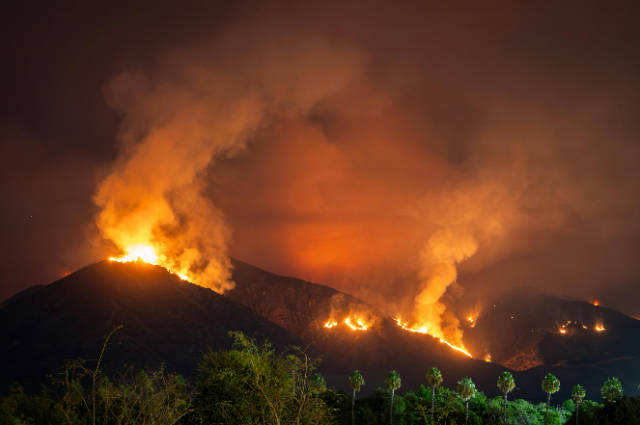
California, a state synonymous with sunny beaches and sprawling forests, is increasingly becoming a symbol of climate-induced catastrophe. Wildfires, once a seasonal phenomenon, have now become a year-round menace. While multiple factors contribute to this crisis, the La Niña climate pattern has emerged as a critical player in fueling California’s wildfire infernos.
What Is La Niña?
La Niña is a climate phenomenon that occurs when sea surface temperatures in the central and eastern Pacific Ocean drop below average for an extended period. This cooling disrupts atmospheric circulation, altering global weather patterns.
In the U.S., La Niña typically creates dry conditions in the southern states, including California, while bringing wetter weather to northern regions. This stark contrast in weather patterns amplifies drought conditions, depletes reservoirs, and increases the likelihood of wildfires in the state.
How La Niña Fuels California Wildfires
- Drier Winters: During La Niña years, California often receives below-average rainfall. These dry winters leave vegetation parched and highly flammable, providing the perfect fuel for wildfires.
- Prolonged Drought: La Niña exacerbates long-term droughts, drying out the soil and vegetation. The result is a landscape primed for ignition, with little moisture to curb the spread of fires.
- Strong Winds: La Niña impacts wind patterns, intensifying the dry and gusty Santa Ana winds. These winds not only fan flames but also carry embers across large distances, causing fires to spread rapidly.
The 2024-2025 Wildfire Season: A Case Study
2024: A Year of Record-Breaking Fires
California’s 2024 wildfire season was catastrophic. According to CAL FIRE, the state endured 8,024 wildfires, burning over 1,050,012 acres of land. These fires destroyed 1,716 structures and claimed one civilian life.
The Lake Fire, one of the largest blazes of the season, scorched 38,664 acres in Santa Barbara County. This fire, along with others, highlighted the devastating impact of prolonged drought and La Niña’s influence.
2025: The Crisis Persists
As the calendar turned to 2025, Southern California continued to face the wrath of wildfires.
Since January 7, a series of fires have ravaged the region, with the Palisades Fire alone burning 23,650 acres. As of January 12, these fires have claimed 16 lives, forced nearly 180,000 evacuations, and destroyed or damaged over 13,400 structures.
Firefighters have cited La Niña’s dry conditions as a major factor behind the ferocity of these blazes. Santa Ana winds, intensified by the climate pattern, have made containment efforts even more challenging.
La Niña in the Context of Climate Change
While La Niña is a natural climate cycle, its effects are being amplified by human-induced climate change. Rising global temperatures are intensifying droughts and drying out forests faster, creating a tinderbox environment. California’s warming climate has also lengthened the wildfire season, leaving less time for recovery between fire events.
The year 2024 was officially the hottest year on record, with global temperatures rising 1.47°C to 1.62°C above pre-industrial levels. This warming trend directly affects California’s climate, making the state more susceptible to La Niña’s destructive impacts.
The Need for Action
The wildfires tearing through California are not just natural disasters—they are a warning sign of the planet’s changing climate. Addressing this crisis requires a two-pronged approach:
- Mitigation: Reducing greenhouse gas emissions to slow global warming and its effects on climate patterns.
- Adaptation: Investing in wildfire prevention strategies, such as controlled burns, forest management, and strengthening firefighting infrastructure.
Conclusion
La Niña is a silent but potent force behind California’s worsening wildfire crisis. Its ability to create drier, windier conditions makes it a formidable catalyst for these devastating events. Combined with the effects of climate change, La Niña is pushing California’s ecosystems, communities, and resources to the brink.
As the state battles yet another ferocious fire season, it serves as a grim reminder of the urgent need for global and local action to combat climate change and its cascading impacts. The clock is ticking, and the flames are closing in - will we act before it’s too late?
